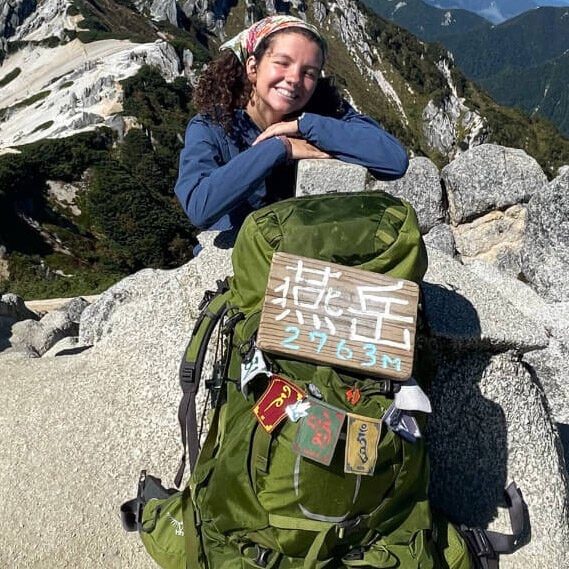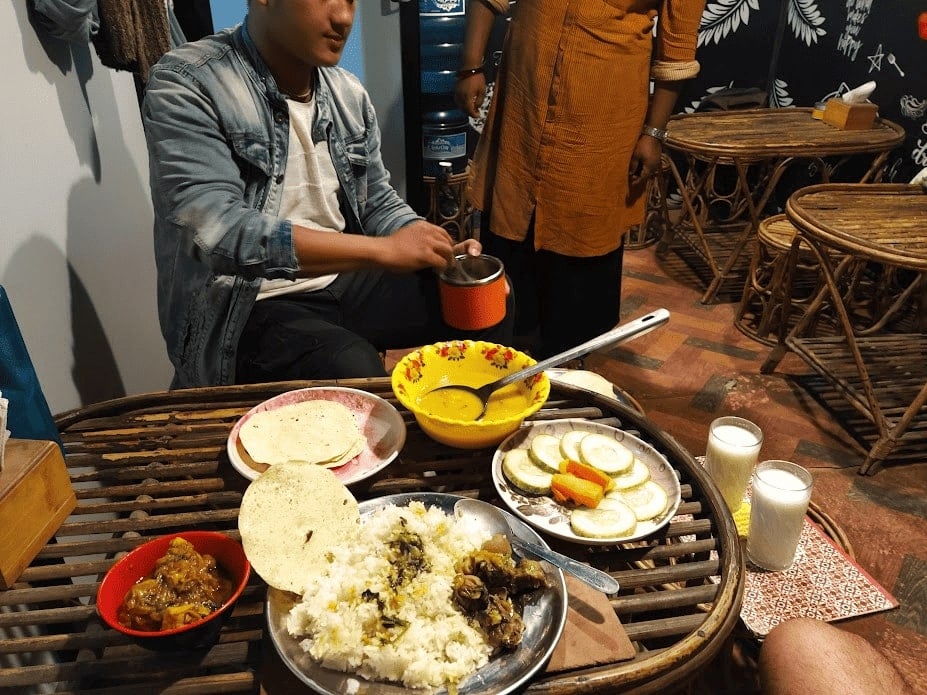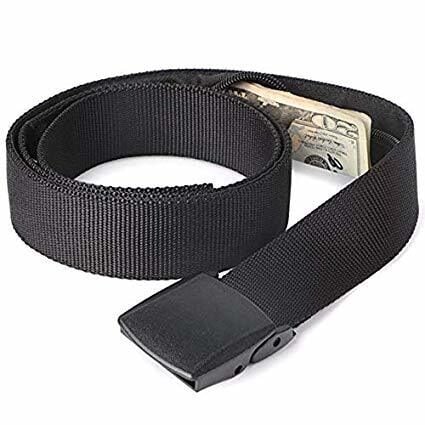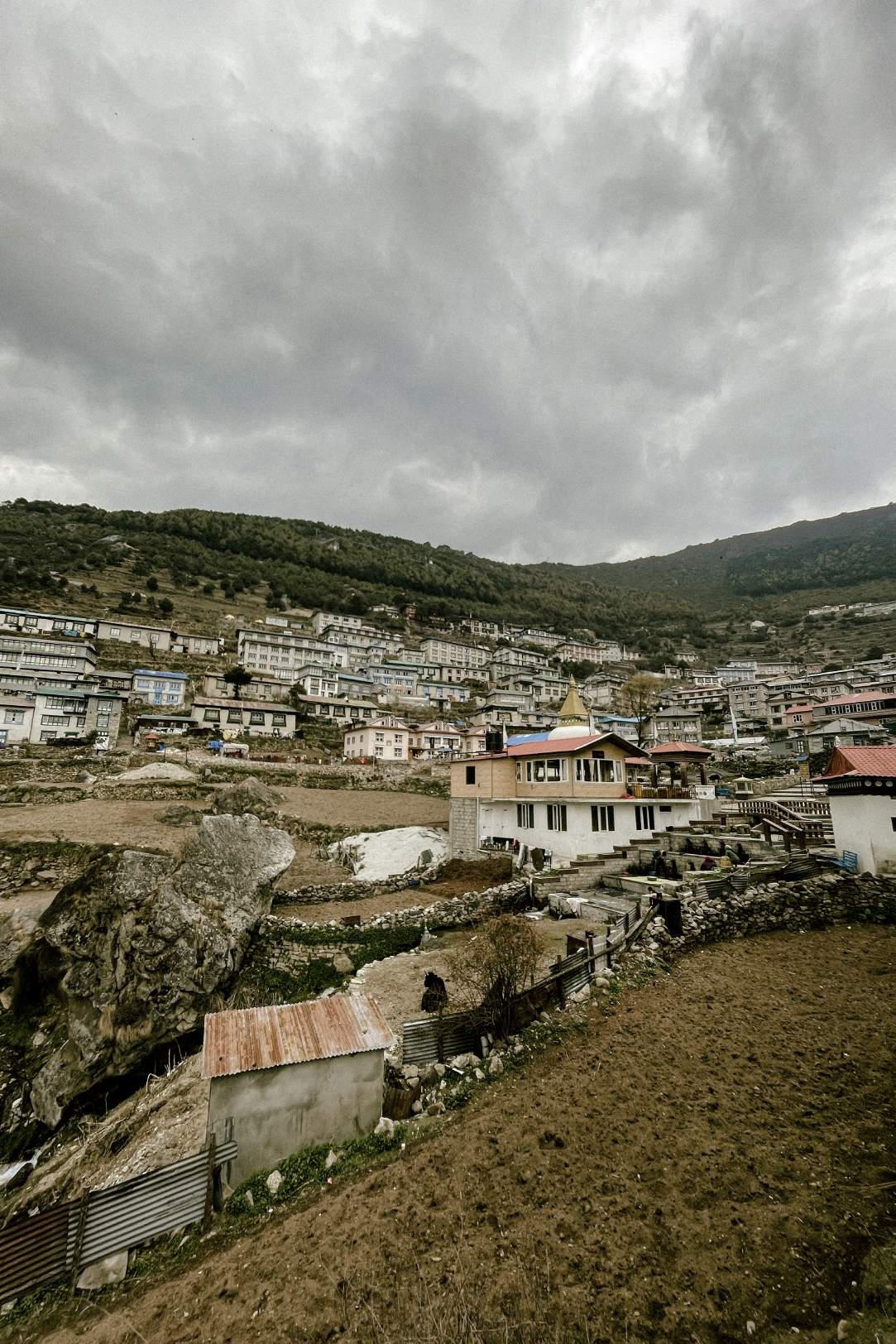As a kid growing up in school, I was taught about the Himalayas, with Mount Everest being the soaring pinnacle of it all – the highest point on the face of this planet at 8849m. For context and simple illustration, the highest building in the world, the Burj Khalifa, is not even a tenth of that height.
Perhaps that is the main reason why so many people travel to Nepal every year to try and catch a glimpse of Planet Earth’s peak, be it through a trek up to base camp, or a helicopter ride through the mountains.
As a matter of fact, climbing Everest in itself is a whole industry, accounting for nearly 10 percent of the nation’s GDP.
What people often miss out on though, is that Nepal has so much more to offer than just its mountains. So strap in, friend, and allow me to take you on a journey. I’m going to give you 3 reasons to visit Nepal, pack up your hiking boots and book that next trip. Nepal has personally changed my perspective on life, and I’m excited to show you why so in this article.

Photo: Luke Lui
The Broke Backpacker is supported by you. Clicking through our links may earn us a small affiliate commission, and that's what allows us to keep producing free content 🙂 Learn more.
1. It’s Super Budget Friendly
As a backpacker, the most important thing I consider when traveling is budget. Many people I’ve met on the road seem to think that visiting Nepal is very expensive, and therefore this country remains just a distant dream.
Surprisingly though, I found myself spending under 10 USD per day during my 2 week stay in the country. That included accommodations, food, transport and even left me with a few dollars for a cold beer or two. Nepal is honestly very cheap if done properly, but at the same time, it’s also possible to spend an absolute fortune if you decide to go with an organized hiking expedition.
Nepal Trekking Costs
I did the Everest Base Camp trek in April 2023 and my largest expense incurred would definitely be the 25-minute domestic flight from Kathmandu to Lukla (the start of the trek). That set me back nearly 300 USD for a round-trip ticket, which was still, in my opinion, worth it. Especially considering the fact that pilots have to be extremely well-trained to fly through the rough Himalayan terrain. Flying in and out of Lukla airport is a once-in-a-lifetime experience and if the weather plays ball, you will be blessed with truly stunning views.
Lukla has the dubious honor of being known as the most dangerous airport in the world. You could save more money if you opted to skip the flight and instead choose to start your hike from Salleri, the final point that vehicles can access. But besides the flight, I was pleasantly surprised to find it very affordable to hike through the mountains. At of the time of writing, there is no need to hire a guide or porter for the EBC trek itself.

Photo: Luke Lui
This means if you feel that you are capable enough to do it independently, you can definitely save quite a bit. Besides, you’ll feel way more accomplished should you eventually make it through to the end. For 12 days on this hike, you spend on average 5 USD for a simple bed and breakfast at each teahouse homestay along the way.
Meals do tend to get pricier the higher you go as supplies have to travel further. I will never forget paying 8 USD for a simple Korean cup of noodles at the last stop before base camp. I also brought along some simple snacks and energy bars which helped me stay fuelled and kept costs low.
Last but not least, hiking permits, a one-time payment, cost me about 30 USD. I did some research and my understanding is that the costs of hiking other popular treks in the region – like the Annapurna Circuit – are pretty similar to EBC. And so rejoice fellow thrill-seekers, for it turns out that trekking in Nepal is hardly expensive if you compare it with other treks such as Kilimanjaro or Patagonia.
General Nepal Expenses
Moving on to expenses outside of treks, a day’s spending in the capital city of Kathmandu was, surprisingly, way cheaper than expected. I stayed in Flock Hostel Kathmandu right in the heart of Thamel, the main backpackers’ district, and paid about 6 USD per night. Like most Asian cities, the cost of accommodation varies from one extreme to another, and therefore, it will depend entirely on the budget you set for yourself.

Photo: Luke Lui
Food-wise, I decided to treat myself a bit more, considering how the meals on the trek had left my tastebuds aching for more variety. I urge you not to have any sort of expectations of the food in the mountains to prevent any disappointment. The dishes might be plain and simple, but I can assure you the views and the experience of being in the Himalayas are so incredible that you will hardly notice any shortcomings in the taste.
While backpacking Kathmandu, I spent about 10 USD per day on food, all while having at least 3 meals and a few desserts. In fact, food was so cheap that it started to get dangerous for my wallet and my weight considering how easy it was to spend and eat.
Transport in Nepal set me back only 2 USD per day or even less. Using applications like inDrive and Pathao instead of flagging down taxis helps too. Or you could simply walk around the city, which will allow you to take in the views whilst getting some precious zone 2 cardio in – a good warm-up before heading to high altitude. Do be cautious though, as Nepal’s traffic is notorious for its lack of traffic lights and road signals.

We’ve tested countless backpacks over the years, but there’s one that has always been the best and remains the best buy for adventurers: the broke backpacker-approved Osprey Aether and Ariel series.
Want more deetz on why these packs are so damn perfect? Then read our comprehensive review for the inside scoop!
View on Osprey View on REI2. The Food!
Feeling peckish? Good, let me whet your appetite as I run you through some of Nepal’s most iconic, not-to-be-missed, dishes. Nepal is a melting pot of delicacies, ranging from its very own local Dal Bhat to a steaming, piping hot bowl of ramen with its broth thicker than a politician’s promise.
I personally would put the food in Nepal down as the Mount Rushmore of the best food I’ve ever tried. It might seem like quite a reach to say that it’s worth it to come to Nepal just to eat the food, but the simple fact is: it really is. And so even if hiking might not necessarily be your cup of tea, this is another big reason for you to check this country out.

Photo: Ciaran Nye
The most common food you will find is Dal Bhat. Consisting of lentil soup and rice, with varied sides such as steamed vegetables and curry, the dish does not fail to disappoint on any occasion. The aromatic smell of spices wafting through the air coupled with the complex flavours that dance on your palate is guaranteed to make every bite an experience to savour.
Each beautiful region of Nepal adds its own unique twist to this nationwide favorite, infusing it with different regional ingredients and cooking techniques. For example, in the West, the dish is often served with a side of buckwheat bread whereas the East serves it with a side of boiled vegetables. Aside from Dal Bhat, you will find plenty of street food vendors lining up the lively streets of Kathmandu, offering up a plethora of simple eats such as momos (dumplings filled with meat or vegetables), samosas, or sweet treats.

Photo: Luke Lui
As you wander around, seek out sel roti, a crispy fried rice flour donut, or allow yourself to indulge in those mouthwatering slices of fresh fruit drizzled with honey and sprinkled with chaat masala for an extra kick of flavor.
Besides Nepalese cuisine, you can find a range of international delicacies all over the country. From a hot bowl of Chinese beef noodles to thick butter chicken with some freshly baked cheese naan, the culinary scene in the capital most certainly paints a good picture of the city’s cosmopolitan nature.
Within the heart of Thamel, amidst all the chaos of Kathmandu, lies T’s Your Palate, a burger restaurant beckoning weary travelers like myself with the promise of a gastronomical delight. I got The Classic Cheese Burger and a side of loaded chips drizzled with creamy cheese sauce (5 USD).
Engulfed by the warm energy of the city, I found solace in the familiar taste of the burgers back home, a respite from the routine of daily Dal Bhat during my trek. Above me, tattered lines of prayer flags danced in the breeze, intertwined with the cacophony of roadside vendors haggling with tourists. At that moment, amidst the hustle and bustle of the streets of Thamel, the burger I had became more than just a meal—it felt like a savory refuge, a sanctuary within the whirlwind of everything happening around me.

Stash your cash safely with this money belt. It will keep your valuables safely concealed, no matter where you go.
It looks exactly like a normal belt except for a SECRET interior pocket perfectly designed to hide a wad of cash, a passport photocopy or anything else you may wish to hide. Never get caught with your pants down again! (Unless you want to…)
Hide Yo’ Money!3. You Get to Experience a Rich Culture
Nepal is a mosaic of cultures, traditions, and heritage. From the maddening streets of Kathmandu to the remote village tea houses tucked away in the Himalayas, every corner of the country offers a unique glimpse of a rich historical past and proud cultural heritage. The abundance of ancient temples, monasteries, and palaces adorned with intricate carvings and vibrant prayer flags is something that you will be exposed to daily.

Photo: Luke Lui
Many traditional festivals and rituals that have been celebrated for ages still run today, allowing interested pilgrims to throw themselves back in time. Experiencing all of this firsthand was truly a breath of fresh air for me, especially when compared to the skyscrapers and modern landscape I’m used to back in Singapore.
During one of my days there, I ventured out to Bhaktapur, an ancient medieval-like city renowned for its architectural wonders and designated as a UNESCO heritage site.
It felt like going on a set of Doctor Strange, with the ambiance and mystical charm of the smallest city in Nepal shrouding every corner. Bhaktapur is a haven for enthusiasts of fine architecture, its timeless beauty a reflection of the city’s rich history and traditions.
In just 10 days in Nepal, I absorbed more culture than anywhere else. Even trekking through the breathtaking villages and towns of the Everest region, every bend of the trek awaited a slice of life, a story all on its own. A porter slightly younger than me carrying a load twice his size. Women collecting bamboo. Sherpas herding Yaks. Lives lived. Being lived. Caught for a second. A fleeting moment. Then gone.
For ten unforgettable days, I bounced out of bed each morning, eager to see what unparalleled beauty or novel surprise was around the next bend. This hike was truly much more than what I could ever have possibly imagined. All in all, this country’s cultural diversity and heritage left an indelible mark on my experience traveling. It’s a tapestry woven with threads of tradition, spirituality, and resilience.
The highlight of my time in Nepal was how it has changed my outlook on traveling and I believe it will change yours too… The trip was a life-changing experience that instilled in me a firm promise to return to hike here every single year. For me, solo trekking through the vast Himalayas was baptism by fire.
My continuance was with the good graces of the locals who helped me along the way. The Nepalese people are deeply rooted in purpose, preserving their timeless traditions together with an unwavering commitment to artistic sensibility. The warmth and hospitality I received from every smile and gesture left a lasting impression that I will cherish forever. On more than one occasion, I found myself in a conversation setting with some folks en route to the summit of Everest.
Once, I vividly recall sitting across from a sherpa whom I struck up a conversation with. “How are your clients so far?” “Alright, even though sometimes, some of them, their ego gets in their way.” “What do you mean by that?” “They take it too seriously.” He went on and explained how he had met countless headstrong hikers who seemed to have only one goal and one goal in mind: Summit it.

Photo: Luke Lui
Team members lagging behind? Can’t be bothered. Fellow hikers lagging behind? Can’t be bothered. No matter how tiring it is, no matter how dementedly obsessive and immoral it begins to look: We started it, and therefore we must see it through, not them. We are incapable of dealing with unfinished missions. We all thirst for closure, akin to the feeling of wanting to finish a movie, even if we’re not particularly enjoying it. Yet, more often than not, we realize that life offers us plenty of examples of sudden, unsolved endings.
Perhaps, we seek for loose ends to be neatly tied or find ourselves craving certainty in a world where that is impossible to exist. If meaning can’t be found in the ending, then find it in the story instead. Such trips are their own reward. They remind you that sometimes, the journey is more important than the destination. And that at its outset, even a life-destroying meteorite first appears in the night sky as the most brilliant light.
At the end of my week’s hike up to base camp in one of Nepal’s stunning national parks, I vividly recall trudging wearily early that morning and sitting there in silence for a good 20 minutes. And it was there that I was rewarded with a shift in perspective. My world was now seen through a new set of eyes thanks to these Nepalese folks. It dawned on me that my life truly begins from this point forward—the journey ahead is the good part, ripe with possibility and meaning.
Getting Insured BEFORE Visiting Nepal
High quality travel insurance is always essential, but I think that’s even more true when you’re above 5000 meters.
ALWAYS sort out your backpacker insurance before your trip. There’s plenty to choose from in that department, but a good place to start is Safety Wing.
They offer month-to-month payments, no lock-in contracts, and require absolutely no itineraries: that’s the exact kind of insurance long-term travellers and digital nomads need.
SafetyWing is cheap, easy, and admin-free: just sign up lickety-split so you can get back to it!
Click the button below to learn more about SafetyWing’s setup or read our insider review for the full tasty scoop.
Final Thoughts on Reasons to Visit Nepal
The reasons to visit Nepal are many.
From a country that offers a wide range of experiences such as hiking in the Himalayas to gastronomical delights that tantalize the taste buds, the country’s rich cultural landscape and the warm hospitality of the locals weave a narrative that is bound to leave a lasting imprint on all who visit.
My journey through this captivating land certainly has transformed my perspective on life, reminding me that the true essence of travel lies not just in arriving at destinations, but more so in embracing the journey itself—the stories shared, the connections made, and the moments cherished. Nepal, with its mountains, culture, and people, has left an indelible mark on me, beckoning an annual return year, knowing full well that each visit promises new revelations and deeper meaning.

Photo: Luke Lui
Buy Us a Coffee!
A couple of you lovely readers suggested we set up a tip jar for direct support as an alternative to booking through our links. So we created one!
You can now buy The Broke Backpacker a coffee. If you like and use our content to plan your trips, it’s a much appreciated way to show appreciation 🙂







